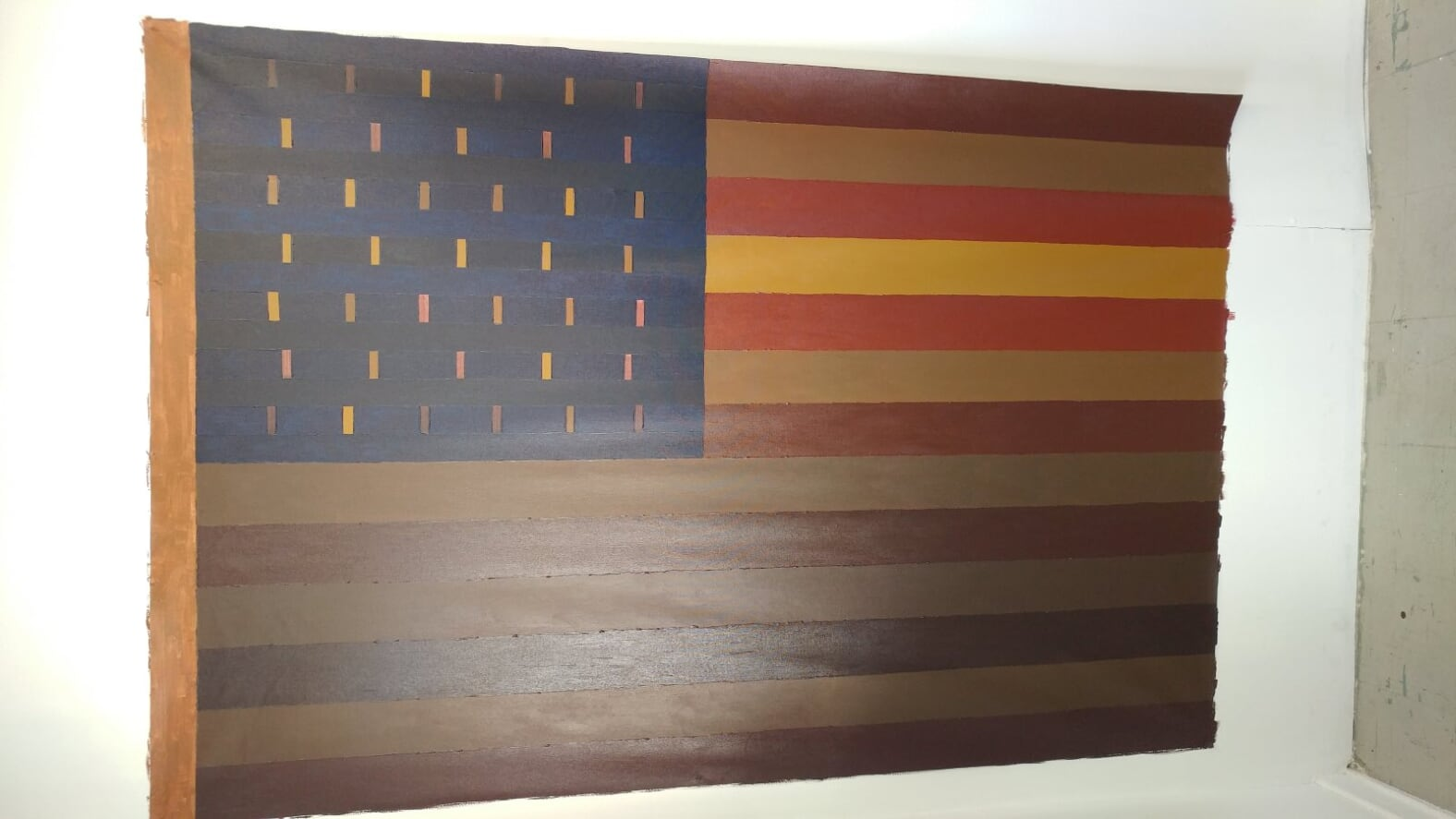sulfur and molasses was the dose: the 21st-century works of June Edmonds
So, dig, baby. June Edmonds is of the academy and deserves to be treated as such—so I know what I am about to write here will not help much. Unless I am deeply mistaken (and unlike most American adults I actually like to be deeply mistaken, eventually), there has not been a visitation of June Edmonds in the form of a compilation of unapologetically Black curators—mostly women—placing her efforts in the context of world history in general and art history in particular. A publisher should have the relatively easy task of collecting the essays that have emerged over the years and lovingly binding them together.
One curator would have had the knowledge of both David Hockney and African American quilt work (because that is how expansive Black academic knowledge is by necessity). And she may find the need to put these together to form the “rich tapestry” that begins to celebrate the general galactic neighborhood where Ms. Edmonds, her work lives. Such a brilliant writer this curator would be! She would, say, use the word Eukaryota or Eukarya to introduce the cellular arrangements we see in Unbought and Unbossed Flag. When we are reminded that Ms. Edmonds composed this tableau of acrylic on on linen, we might see the connection to the fabric of the quilt.
The Hockney angle comes in when this insightful curator dares to compare the swimming pool space-time to the linen fabric space-time. One universe is about macroscopic, domestic, sun-kissed, erotic real estate and June, her universe is about ‘us’ being clothed and in our right mind on a cellular, quantum level, mitosis or meiosis, encrusted with chloroplasts. Now, our sister curator would open the flood gates to bathe us in a stream of almost all of the artists—including folk (quilting) artists—that came before and are contemporary with Ms. Edmonds so we may see her work in context.
Another unapologetic curator would leverage her knowledge of Black American history (which is whole American history) to approach June’s Unbought and Unbossed Flag through the title of the work, leading directly to Shirley Chisholm. Then, out of slightly misplaced generosity and the gravitational shape of current events, Shirley Chisholm would encourage the curator to introduce Senator Kamala Harris (who, by the way, holds some of Ms. Edmonds’ work). To make sure we protect the sensitive constituency of the new-millennium Senator, it would be tactful for our intrepid curator to compare the acrylic brush strokes of Ms. Edmonds to Byzantine mosaics (which is a “universal” subject of art history, no?). We might then be shown June, her radiant, Cote d Azur and taken away to the French Riviera. And while we are talking about warm bodies of water, it should help to recount the meeting between Ms. Edmonds and Mr. Hockney.
In my art-ahistorical, non-academic irresponsibility, I would free-associate sunning on the coasts of the Mediterranean with a Jazz festival. Jazz is the low-hanging strange fruit that hits white people (of all skin colors) over the head with the overwhelming truth that Black artists have an extensive relationship with abstraction. To really alienate my “audience,” I would dare mention that the African ancestry of Blackness defines the human relationship with abstraction—so the relationship June Edmonds,
- Alma Thomas
- Jennie C. Jones
- Adrienne DeVine
- Holly Tempo
- Odili Donald Odita
- Abdoulaye Konaté
- Sharon Louise Barnes
- Howardena Pindell
- Lisa Diane Wedgeworth
- Adrian Culverson
- McArthur Binion
- Frank Bowling
- Freddie Styles
- Norman Lewis
- Stanley Whitney
- Radcliffe Bailey
- Candida Alvarez
- Shinique Smith
- Chris Ofili
- Wardell Milan
let alone the ascendant Mark Bradford have with abstraction should no longer be marginalized by the “academy” (well-funded, well-marketed, institutional centers of affluent attention) with insulting suggestions that colored folks are “trying” to imitate the non-representational art of the Euro-mainstream.
When you hear Betty Carter singing you are not hearing anything else but her voice. She is singing “Spring Can Really Hang You Up the Most”:
sulfur and molasses was the dose
Does not this flag look like it was treated with the same dark tonic?:

Would not this treatment be administered when the healer knows there is sickness? This is not “defacement”—this is therapy, immaculate.
